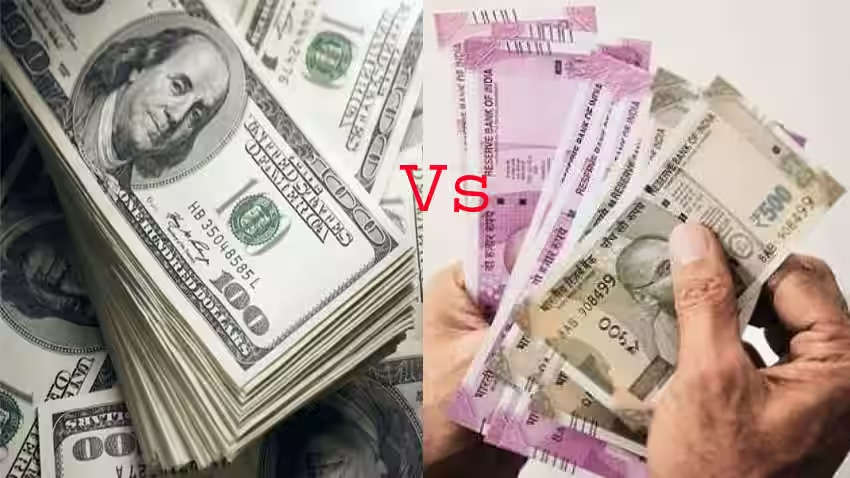Indian Rupee strengthens as RBI stays neutral; US‑India tensions escalate with Trump hiking tariffs to 50%—dig deeper into what it means for markets.

Ever had that flutter when something out of your control hits your wallet? That’s what India’s financial markets felt this week. The Indian Rupee closed slightly stronger despite the shockwaves from a 50% U.S. tariff. What’s going on—and why should you care?
Indian Rupee moves higher against the US Dollar
Let me walk you through this, like we’re having a chai-chat—unpacking macro moves, human stories, and smart tactics.
Why the Rupee Strengthened—Beyond the Headlines
RBI’s Neutral Tone: A Quiet Anchor
The Reserve Bank of India held its repo rate at 5.5% and conveyed a neutral stance on future guidance FXStreet. That gave confidence to markets craving stability amid rising external pressure.
What it means for you: A neutral central bank is like a calm captain steering through a storm. Investors saw that as a sign India isn’t panicking—and the Rupee quietly benefited.
Key takeaway: RBI’s composed stance helped the Rupee inch higher, even as external headwinds grew.
A Weak Dollar in Global Markets
Meanwhile, the U.S. Dollar Index (DXY) stayed soft—hovering around 98.20—anchoring across Asia FXStreet.
In human terms: Think of the Dollar like a dinged-down heavyweight boxer—less punch means emerging fighters, like the Rupee, can step up.
Key takeaway: Global Dollar weakness added fuel to the Rupee rally.
The 50% Tariff Tsunami—Trade Shock to Ripple Effects
What Trump Did (and Why)
On August 6, 2025, ex‑President Trump issued an executive order adding another 25% tariff on Indian goods, elevating the total to a staggering 50% ReutersThe Washington Post.
This move isn’t just about economics; it’s political theater—blaming India’s continued Russian oil purchases for allegedly fueling the war in Ukraine Financial TimesIndiatimes.
Why it matters: Tariffs of this magnitude can disrupt entire industries—from textiles to electronics.
Who’s Losing—and How Much
Textile exporters like Gokaldas Exports, Pearl Global, KPR Mill, and more are expected to bear the brunt of the tariff impact The Economic Times. Shrimp exporters such as Avanti Feeds and Waterbase dropped up to 5% following the news The Economic Times.
Real‑world example: Imagine if your favorite kurta or prawn masala suddenly became 50% more expensive to export. It’s not just numbers—it’s real jobs, livelihoods, and export markets.
To top it off, gold prices jumped (safe‑haven demand rising) while the Fed hinted at potential rate cuts—further pressuring the Dollar Reuters.
RBI Intervention to the Rescue
The RBI stepped in—making interventions in the non‑deliverable forwards (NDF) market to prevent a free fall (pushing Rupee beyond ₹87.95) Reuters. That defense helped the Rupee close around ₹87.70 against the Dollar despite global jitters Reuters.
Key takeaway: With RBI support, the Rupee showed resilience—managing to stay afloat despite hefty tariffs and geopolitical stress.
What This Means for You—Markets, Money & More

- For businesses & exporters: Higher tariffs mean immediate cost pressure. Plan hedging ahead.
- For investors: RBI’s calm posture and Fed’s hint at rate cuts could signal more favorable borrowing conditions—keep an eye on bond yields and FPI flows.
- For watchers of globalization: India’s stance matters—not just as a buyer of Russian oil but as a growing counterbalance to China. Modi’s neutral tone on farmers adds layers to the political complexity Financial Times.
Play-by-Play: How the Rupee Managed Upside
Step 1: RBI holds steady, markets breathe
The calm repo rate and neutral guidance stabilized investor sentiment.
Step 2: Dollar weakens globally
A softer DXY gave the Rupee space to climb.
Step 3: Shocking tariff announcement hits
The 50% import duty rattled industries—yet markets didn’t collapse outright.
Step 4: RBI intervenes
NDF market support prevented deeper decline, keeping the Rupee from plunging.
Humanizing the Macro—What Indians Are Feeling
Remember stories like the textile weaver in Tirupur or the fisherfolk exporting shrimp? Their world just tilted:
- Sudden cost shocks—goods that were being shipped may now cost far more.
- Ripple effect—laborers, logistics, and related sectors all brace for turbulence.
- Uncertainty—is this temporary blip or a sign of a shifting trade environment?
Conclusion
The drama of a 50% tariff and a fragile Dollar could’ve spelled disaster. Instead, thanks to RBI’s level-headed intervention and global forces at play, the Rupee managed to lift—quietly nudging stronger even as headlines screamed turmoil.
CTA
Are you following the USD/INR dance or tracking export trends? Drop your questions or share what this means for your business or investing journey. Let’s unpack it together.

What sectors face the most risk from new tariffs?
Textiles, shrimp exports, leather, jewelry, and other India‑to‑U.S. shipments.
How does a weaker USD help the Rupee?
It makes INR appear stronger as global demand shifts to emerging market currencies
Can RBI keep intervening indefinitely to support the Rupee?
Not indefinitely—reserves are finite. But short‑term defense via NDF helps.
Will these tariffs reverse soon?
Unclear—tariffs take effect late August. Future may hinge on diplomacy and trade talks.
Why did the Rupee gain despite 50% U.S. tariffs?
Because RBI held rates and guided neutrally, while the U.S. dollar weakened globally.